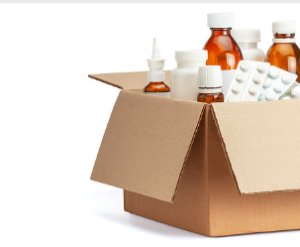Although rPET reduces plastic waste by repurposing a material that doesn’t naturally decompose, it’s not without its downsides. Creating products from recycled plastics takes less energy than producing first-time products, but carbon emissions are still released in the process.
Consumers increasingly emphasise sustainability, encouraging brands to increase their rPET content and support closed-loop recycling systems. First, however, consumers must understand the recycling process to ensure it’s done correctly.
Choosing the Right Box
Shop rPET recyclable packaging offers several benefits, including reducing the amount of waste produced. It also reduces the demand for pure ingredients and helps lower carbon emissions. Additionally, it is more affordable than other types of packaging and can be made from a wide range of materials. It is also lightweight, making it easy to transport and stack. Lastly, it is shatterproof and transparent, ideal for packaging food and beverage.
rPET is a type of post-consumer recycled PET plastic, which is created from bottles that have been collected and processed for recycling. The material is gathered from various sources, including household recycling collections and industrial and manufacturing waste. It is then sorted and screened for contaminants. After processing, the plastic is converted into RPET flake or pellets and sold to companies that use it to make new products, including packaging.
While creating rPET is less resource-intensive than producing first-time plastics, it still requires substantial energy. Furthermore, melting and purifying recycled plastics releases volatile organic compounds that harm the environment. These pollutants can be transported from the production site to nearby communities and wildlife, further contributing to environmental degradation.
To avoid such damage, choosing a suitable packaging material is essential. The best choice is rPET, which is recyclable and lightweight. rPET can be used for food, beverage, cosmetics, and other products. It is also a sustainable alternative to different types of packaging, such as paper and cardboard.
 When choosing a shop rPET recyclable packaging container, consider the size and shape of the items you want to store. Look for a box that will fit the items without bending or folding. The package should also be durable, as it must withstand frequent handling.
When choosing a shop rPET recyclable packaging container, consider the size and shape of the items you want to store. Look for a box that will fit the items without bending or folding. The package should also be durable, as it must withstand frequent handling.
Another factor to consider is the labelling. The labels on shop rPET recyclable packaging are made of polyolefin-based materials, such as polypropylene, which are recycling-friendly. Moreover, they do not contain heavy metals and can be easily recycled. In addition, they do not have adhesives that require solvents.
Thermoformed PET packaging is a popular plastic retail container for salad greens, berries, bakery items, and more. These boxes are made by stretching a heated sheet of PET into a mould and then cooling it to create the desired shape. The material is also used for medical packaging, blisters, and other packages. Regardless of the size or shape, ensuring your container is made of rPET plastic is essential to minimise its impact on the planet.
Putting Items in the Box
Plastic is a versatile material that has many uses in today’s world. It is durable and lightweight, making it an excellent choice for packaging food products and other items. It is also highly recyclable, which is good news for the environment. However, the process of recycling plastic can be complicated. It is because melting down recycled plastics can create volatile organic compounds that harm the environment and wildlife. Additionally, the process can also produce carbon emissions. It makes it essential to consider the environmental impact of choosing the type of plastic for your company’s packaging.
A few different types of plastics can be used for packaging, but PET and rPET are two of the most popular options. These are made from recycled plastic that consumers have already used and then thrown away. This type of recycled plastic can cause many eco-friendly promotional items, including bags, hats, and other accessories.
Another option for packaging is polylactic acid, which is a bioplastic that is made from renewable plant sources, such as corn. It can be moulded into containers that have similar properties to PET. This type of plastic is marketed as eco-friendly because it can be recycled repeatedly without using new resources. However, it is essential to note that PLA is not as durable as PET, so it may not be suitable for long-term food storage.
Choosing which type of plastic to use for your company’s packaging will depend on your brand values and customer base. Both rPET and PLA have similar qualities, so choosing the one that best suits your business needs is essential. If you are looking for a sustainable alternative to virgin plastic, rPET is the clear winner in eco-friendliness since it reduces greenhouse gas emissions by 79% compared with virgin PET.
As legislators and consumers continue to amplify concerns about plastic’s sustainability, companies must prioritise sourcing PET thermoforms with high recycled content. It will help boost the quality of shop rPET recyclable packaging that can be added to the global supply stream.
